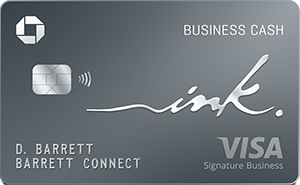This device is too small
If you’re on a Galaxy Fold, consider unfolding your phone or viewing it in full screen to best optimize your experience.
Many or all of the products here are from our partners that compensate us. It’s how we make money. But our editorial integrity ensures our experts’ opinions aren’t influenced by compensation. Terms may apply to offers listed on this page.
KEY POINTS
- Access start-up capital with less stringent requirements by tapping into SBA loans.
- Partners with capital can help with funding and expertise, but tread carefully with shared decision-making.
- Crowdfunding can allow you to raise money while building early momentum and market interest.
The thought of starting a business is usually really quite exciting. How will you do it, what will your name and logo be, where will you find customers? For the would-be entrepreneur, this is all usually a very fun and interesting thought exercise.
But one issue that is typically more challenging than fun is how and where to find the money to fuel the dream. Will you need a business loan? What other options are there? The good news is that there are several realistic options that can take you from cash-strapped to cash-flush.
Here are four ways to fuel your business fire and set yourself up for success.
1. Get a loan
One of the first places to turn to when looking to fund a business is through a lender. Banks, credit unions, and online lenders offer a variety of loan products tailored to small businesses startups.
Of these, the ones to really consider are loans guaranteed by the federal Small Business Administration (SBA). The SBA does not make loans itself, but guarantees them, and as such, getting an SBA loan as a startup is easier than obtaining a traditional loan from a bank.
Why? Banks like to see a track record when making a business loan and start-up funding loans are often more difficult to obtain because there is no track record. But with SBA backing, banks are more apt to lend to a new startup, and that is why SBA loans should be your preferred choice.
Why a Business Credit Card Could Transform Your Small Business
These business credit cards that offer a convenient and efficient way to separate personal and business expenses, simplifying accounting and tax reporting.
Additionally, business cards can provide valuable perks such as rewards points, cashback, and expense tracking tools, enhancing financial management and the potential to help save money in the long run.

Ink Business Unlimited® Credit Card |
Earn $900 bonus cash back Earn $900 bonus cash back after you spend $6,000 on purchases in the first 3 months from account opening. |
Earn unlimited 1.5% cash back on every purchase Earn unlimited 1.5% cash back on every purchase made for your business |
Purchases: 0% Intro APR on Purchases, 12 months Balance Transfers: N/A
Regular: |
|

Ink Business Cash® Credit Card |
Earn up to $750 bonus cash back Earn $350 when you spend $3,000 on purchases in the first three months and an additional $400 when you spend $6,000 on purchases in the first six months after account opening. |
Earn 5% cash back in select business categories Earn 5% cash back on the first $25,000 spent in combined purchases at office supply stores and on internet, cable and phone services each account anniversary year. Earn 2% cash back on the first $25,000 spent in combined purchases at gas stations and restaurants each account anniversary year. Earn 1% cash back on all other card purchases with no limit to the amount you can earn. |
Purchases: 0% Intro APR on Purchases, 12 months Balance Transfers: N/A
Regular: |
To get one of these loans, you will need a solid business plan, good credit, and likely collateral.
2. Get a partner
If taking on debt does not appeal to you, another funding option is to bring on a partner with deep pockets. The partner offers actual equity and you offer what is often called “sweat equity” (meaning they fund the business and you do most of the work).
But beyond that, a partner might offer not only funding, but also expertise, connections, and a valuable sounding board. This can be especially beneficial if your partner brings skills or knowledge that complement your own, thereby adding value to your business beyond just the cash infusion.
Note though that if the good news about getting a partner is that you will have a partner, the bad news is…you will have a partner. Decisions will be joint, your partner will have equal say, and the partner can even take on debt in the name of the partnership. So choose wisely.
It is therefore essential to have clear written agreements in place to define roles, responsibilities, and the division of profits and losses.
3. Crowdfunding
Traditionally, there have been two ways to fund a business:
- Debt funding
- Equity funding
Debt funding is what it sounds like — you take on debt in the form of a loan. Equity funding is the sort of funding you see on the TV show Shark Tank — you give up a share of the business (equity) in exchange for an investment in the business.
Crowdfunding is newer and altogether different. Here, people give you money in exchange for some reward you offer. No debt, no equity sharing. A food truck might, for example, name a dish after one of the crowdfunding investors.
Platforms like Kickstarter and Indiegogo allow you to pitch your idea to the public and raise funds from a large number of people. The other cool thing about crowdfunding is that it not only provides capital but also serves as a marketing tool, helping you build a customer base before your product even hits the market.
4. Bootstrapping
Your final option is good old-fashioned bootstrapping. Bootstrapping involves funding your business with your own money, hard work, and initiative. It might be through tapping personal savings, using credit cards, selling some stock and using the proceeds, or even asking your Uncle Joe for some help.
Bootstrapping may not be ideal, but a lot of new entrepreneurs do it, and often in conjunction with one or more of the options above. Why? Because other investors like to see that you have, as they say, “skin in the game.” Bootstrapping proves you do. Indeed, according to Fundera, 77% of new entrepreneurs use some of their own funding in the start-up process.
So while it might not be easy, going from cash-strapped to cash-flush is quite possible with some ingenuity and hard work. And who knows, down the road with your newfound success, you might just be the one being asked to lend money to the next would-be entrepreneur.



